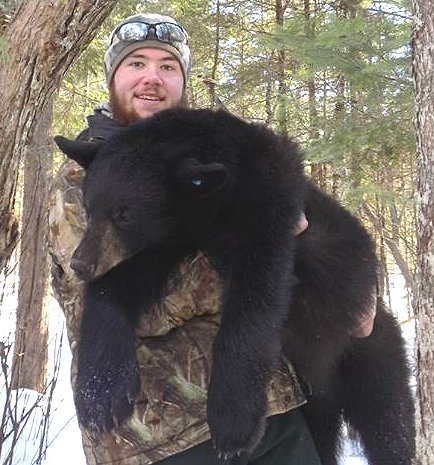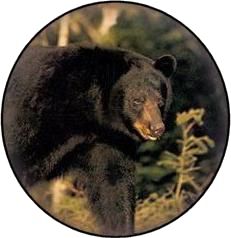The black bear is the smallest of the three species of bears inhabiting North America (black, brown/grizzly, and polar), has the widest distribution on the continent, and is the only bear living in the eastern United States.

Black bears are found in most forested areas from Mexico north to the edge of the tree line in Canada and Alaska.
Although most black bears are not much larger than humans, their weight can vary tremendously with the season of the year. Bears store body fat during the fall months to supply energy during their long winter denning period, and are heaviest in late fall.
Adult males average 250 – 600 pounds, and measure 5-6 feet from tip of nose to the tip of their tail. Females are smaller, weighing 100-400 pounds, and measuring 4-5 feet in length. Males stand about 40 inches tall at the shoulder; females seldom exceed 30 inches in height. Bears are compact, with stocky legs, small eyes, short, rounded ears, short curved claws, and a short, inconspicuous tail. The black bear has a straight facial profile and a massive skull.
Black bears in Maine are normally black, but they are often various shades of brown to cream colored in western populations, and are even white, and blue-gray in color in coastal British Columbia and Alaska. They have a brown muzzle, and occasionally a white throat or chest patch or “blaze”.
Bears walk flat-footed, and their broad feet leave 5-toed tracks that sometimes resemble human footprints. Tracks of female bears rarely exceed 4.5 inches in width; males leave tracks up to 6 inches wide.
by Craig McLaughlin, Ph.D.
Wildlife Biologist
Maine Inland Fisheries and Wildlife



